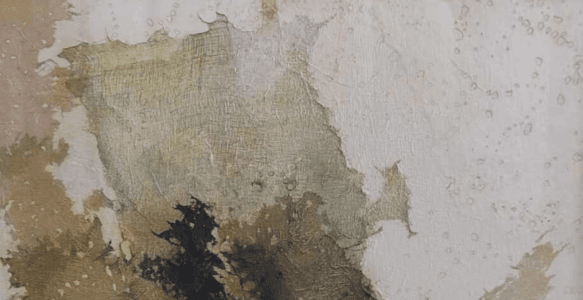Understanding Minimalist Abstract Art and Its Evolution - Artflute
The Art of Simplicity: Understanding Minimalist Abstract Art

Minimalist abstract art is a mesmerizing example of how simplicity can profoundly affect us. It's all about stripping art down to its core elements, making a big impact with very little. This style has made waves in the world of modern abstract art, sparking deep thinking and inviting reflection. Through this blog, let us understand in-depth what minimalist abstract art is.
What is Minimalist Abstract Art?
Abstract art transcends the boundaries of conventional representation, offering a departure from realistic depictions of the visible world. Instead of aiming to mirror physical reality, abstract artists communicate through a rich tapestry of lines, shapes, colours, and forms. These elements converge to evoke emotions, ideas, and sensations that resonate with viewers on a deeper level. Minimalist abstract art paintings invite viewers to engage with the artwork on a personal level, encouraging introspection and exploration. Freed from the constraints of literal representation, observers are invited to interpret and connect with the minimalist artwork based on their own experiences and perspectives. In this way, modern abstract art becomes a catalyst for dialogue, sparking conversations that transcend language and cultural barriers.
When Did Minimalist Abstract Art Begin?
The exact origins of minimalist abstract art have been a topic of discussion among art historians. Wassily Kandinsky is often hailed as the trailblazer of minimalist art, famously remarking, “back then not one single painter was painting in an abstract style.” His groundbreaking piece, "Komposition V," crafted in 1911, thrust abstract art into the public consciousness. Yet, another figure, the Swedish painter Hilma af Klint, is believed to have preceded Kandinsky. She unveiled her first abstract drawing in Stockholm in 1906 – a significant five years before Kandinsky's pivotal work. Af Klint's avant-garde creations featured futuristic designs, blending biomorphic and geometric shapes against bold, vibrant backgrounds. While Kandinsky gained recognition in his lifetime, af Klint's reluctance to seek the spotlight meant her contributions went largely unnoticed. Preferring to keep her artworks private, she held only a handful of exhibitions, convinced that the world wasn't prepared for her visionary abstract art paintings. It wasn't until 1986 that af Klint's art began to receive the recognition it deserved, marking a belated but significant appreciation of her pioneering contributions to minimalist abstract art.
How Has Minimalist Art Changed Over Time?
Since its inception in the early 1900s, minimalist abstract art has undergone significant evolution as artists experimented with the style. Piet Mondrian, renowned for his geometric compositions, emerged as a key figure in shaping 20th-century modern abstract art. Cy Twombly, drawing from surrealist automatism, embraced the subconscious to create emotive, frenetic marks on canvas. Today, minimalist abstract art continues to progress with contemporary artists pushing boundaries and exploring new frontiers. Lee Ellis captures inner turmoil through intricately layered portraits that play with surface and depth. Barbara Krupp boldly experiments with form and colour, infusing her works with vibrant energy, reflecting the ever-evolving nature of modern abstract art.
Key Characteristics of Minimalist Abstract Art
Minimalist painter Frank Stella once remarked, "What you see is what you see," encapsulating the essence of Minimalist Art. This statement effectively captures the core traits of the movement: a deliberate absence of extraneous visual associations and a focus solely on the artwork itself. At its core, Minimalist Art is characterized by simplicity, featuring uncomplicated forms, sharp edges, and clean lines. Artists in this genre intentionally strip away decorative and figurative elements, opting instead to emphasize a stark two-dimensional aesthetic. The objective? To offer viewers a purely visual encounter and to demystify the artistic experience. While earlier movements like Expressionism and Abstract Expressionism aimed to imbue their works with personal expression, Minimalists pursued a different approach. They sought to distance themselves from their creations, prioritizing clarity, directness, and orderliness in their compositions. In doing so, they created artworks that invite contemplation and appreciation of the inherent beauty found in simplicity.
What is Abstract Expressionism?
Abstract Expressionism emerged as a significant movement within the art world, marking the second wave of abstract art in the 1940s, primarily centered in New York City. Influenced heavily by surrealism, it became the first American art movement to gain widespread international recognition, boasting notable artists like Jackson Pollock, Mark Rothko, and Willem de Kooning. Among contemporary artists, Matthew Dibble stands as a torchbearer of abstract expressionism. After years in the construction industry, Dibble brings a keen sense of form and structure to his artistic endeavors. In works like "Dutch," he orchestrates a symphony of black and grey marks that dance vigorously across the canvas, evoking a sense of rapid movement and rebellion, akin to the powerful strokes seen in Indian abstract painting.
Conclusion
In conclusion, minimalist abstract art emerges as a captivating testament to the power of simplicity and the profound impact it can have on both creators and observers. As we continue to navigate the ever-changing landscape of modern abstract art, minimalist abstract art serves as a timeless reminder of the transformative power of minimalism and the enduring allure of abstraction.
